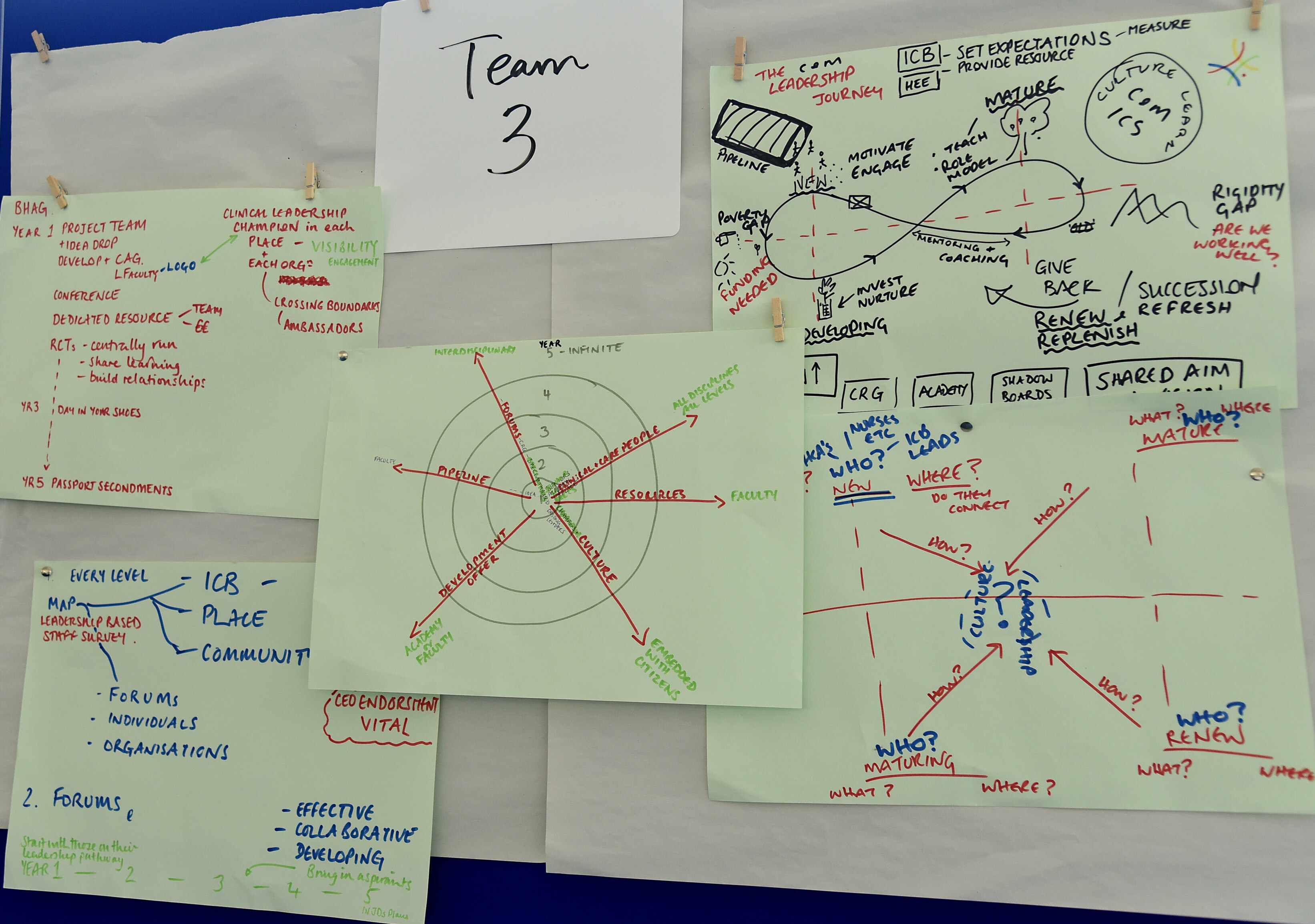What is design thinking?
Watch this video with Jen Kohan, Head of the Coaching Academy, explaining more about design thinking.
We have two offers focused on design thinking. On this page is a description of both.
- Introduction to design thinking: A one-day introductory course
- Design thinking series: A six-month long series of workshops where you apply design thinking to a real-world problem, and develop a user-centred prototype to apply to the problem

Introduction to design thinking
Overview
This interactive workshop is for individuals who want to learn about user-centred design and how it can be applied to complex challenges. We will explore the following questions:
- What is design thinking and how does it connect to health and care system leadership?
- What does design thinking look, sound and feel like in practice?
- How might design thinking help me and others to tackle wicked problems?
- How can I model design thinking practices and help to create a culture of innovative collaboration?
Learning outcomes
In this session, participants will:
- define design thinking and its application in solution development,
- identify the steps taken in design thinking methodology,
- explore approaches and methods that can be applied at each step,
- review how you might introduce design thinking tools and techniques in your place of work,
- reflect on the potential benefits of design thinking in health and care systems.
Audience
This workshop is for a group of up to 20 health and care leaders with a shared challenge to explore.
Details
This full day workshop is delivered in a face-to-face environment. You will learn about the design thinking process in the morning and apply it to a shared challenge in the afternoon.
Instructors
You will be guided through the design thinking process by a qualified coach and expert facilitator.
How to join
Contact coach@healthinnovationnwc.nhs.uk to express interest.
Design thinking series
Overview
In this series, coaches support a group of leaders to collaborate and apply design thinking methodology to a real-world challenge. Throughout the process, leaders will gain experience and coaching in applying design thinking methodology within a learning community, and become confident in facilitating the methodology within the health and care system.
Learning outcomes
- The cohort will collaboratively define a specific problem, design and develop a prototype for testing, and experience the design thinking approach and its concepts through application to a real world problem.
- Gain a deep understanding of the process of design thinking and its application in wider NHS systems.
- Lead the design-thinking process with a real world challenge in your own place of work.
- Gain confidence and skills in applying design thinking within a variety of areas within the NHS.
Audience
This workshop is for a group of up to 20 health and care leaders with a shared challenge to explore.
Details
This series should ideally take place over six months with a maximum of 12 people, with three 2.5-hour virtual workshops and two 1.5-hour coaching sessions.
The workshops can take place in-person or through a digital workspace. We can discuss options that best suit the group.
Instructors
A qualified coach and expert facilitator will guide you through the design-thinking process.
How to join
Contact coach@healthinnovationnwc.nhs.uk to express interest.
Case studies
Read about the creation of the clinical and care leadership framework for Cheshire and Merseyside ICS in Spring 2022 on our Case studies: Systems support page.
What is design thinking?
Design thinking is a user-centred, problem-solving process applicable to any role or industry. It works well across organisational boundaries when there is clarity, focus and motivation to tackle a specific complex challenge or change.
Design thinking can help your team or organisation:
- understand the needs of the people you’re creating something for,
- gain clarity and conviction despite incomplete information,
- reduce the risk of adoption failure when launching a new change, process, service model or product,
- discover and choose solutions that have impact, in the multitude of possibilities,
- learn and iterate faster,
- collaborate better and tap into the creative potential of individuals and teams.
Design thinking principles:
- Start with empathy
- Begin with chaos and move towards clarity
- Reframe the perceived problem or challenge around the user’s needs
- Employ different ways of thinking to come up with various solutions
- Explore and ‘learn while doing’ to gain viability insight
- Test prototypes that survive
- Iterate through the process with empathy and refined clarity
Adapted from:
IDEO U – What is design thinking? and Hasso Plattner Institute of Design at Stanford University (Stanford d.school) - Designing for social systems
